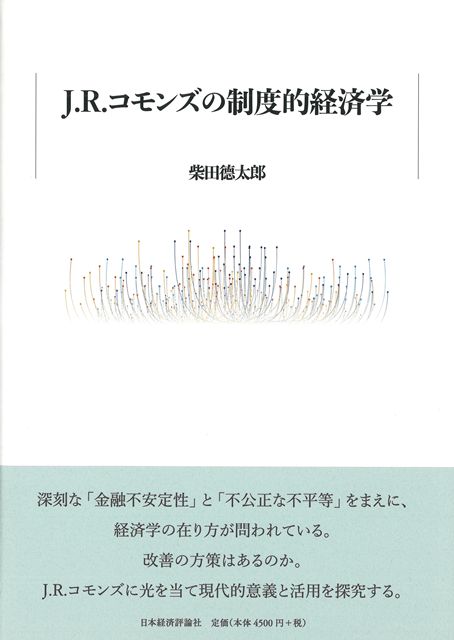
Title
J.R.Commons no seidoteki keiazigaku (The Institutional Economics of J.R.Commons)
Size
310 pages, A5 format
Language
Japanese
Released
October, 2021
ISBN
9784818825925
Published by
Nihon Keizai Hyoronsha Ltd.
Book Info
See Book Availability at Library
Japanese Page
The perspective of legal political economy was the principal feature of institutional economics as put forward by J. R. Commons. He viewed the development of a capitalist economy through the lens of the evolution of legal institutions. Property rights are the most important legal institutions supporting a capitalist economy. The definition of property has expanded from corporeal property to include incorporeal property and intangible property. Commons contrasted the law of incorporeal property with that of intangible property. He argued about two opposite economic relationships: the creditor–debtor relationship and the the seller–buyer relationship. This book endorses Commons’s financial business cycle theory using these two opposing concepts of property.
From the perspective of legal political economy, modern capitalism is characterized by a contrasting pair of property concepts. The increased negotiability of incorporeal property and the development of securities markets have enhanced this tendency and expanded the amplitude of financial business cycles.
The business cycle theory of Commons is as follows.
1) If the profit rate increases and the risk discount decreases, then the expected profit rate increases. Therefore, the value of intangible property will increase. At that time, if the expected profit rate is higher than the borrowing rate from banks, business investment in intangible property, dependent on the creation of debt, will expand.
2) If the borrowing rate from banks exceeds the expected profit rate, business investment in intangible property, dependent on the creation of debt, will begin to decline.
3) If the profit rate declines and risk discount rises, the expected profit rate will fall, and the value of intangible property will decline. At that time, many firms will be unable to repay their debts because of the decreasing profit margin.
Thus, firms will expand their business investment in intangible property dependent upon the creation of debt when prospects for rising profits are favorable if the expected profit rate is higher than the borrowing rate from banks. The accumulation of debt accelerates business investment in intangible property and increases financial instability. Once prices decline, the profit margin will fall drastically due to the increase in the real debt burden.
One of the most important stabilizing collective actions evaluated by Commons is the stabilization of the purchasing power of money and credit.
Another important stabilizing collective action that Commons identifies is the protection of intangible property such as unemployment insurance and the protection of patents, goodwill, and trademarks. The protection of intangible property promotes an increase in efficiency, which means not only an increase in quantity but also an improvement in quality. Thus, protecting intangible property will promote business investment.
(Written by SHIBATA Tokutaro, Professor Emeritus, Graduate School of Economics / 2024)



 Find a book
Find a book

